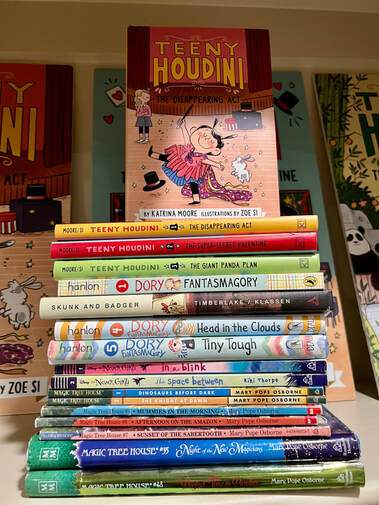 It’s honestly been so long since I’ve written a blog post that I had to remind myself how. How do I begin?! Like all writing, it simply requires starting (or re-starting). May this blog post about beginnings also be the beginning of more regularly posted tidbits of writing inspiration to you, dear writer. Thank you for hanging in there with me. I’m happy to reconnect with you! But this blog post is not just about starting again. (cue Taylor Swift’s “Begin Again,” and feel free to listen to it as an added muse to this blog post!) It’s about beginnings that beg us to read more. Ones that start strong, and force us to flip that page. Ones that compel us to keep going, even though it’s way past bedtime, or we’re in the middle of another book, or we had something else really important to do…but too bad for that (and yay for this book with the brilliant beginning!). How do we begin like that? I spent a good chunk of this year revising a middle grade project into a chapter book series. To do so successfully, I dug back into my chapter book notes that I collected while writing the Teeny Houdini chapter books. I found the notes reviving – reminding me of things I “knew” but wanted to refocus on. And, then, I found myself adding to my notes, and doing a few more studies on recent chapter books that fit the bill of beginning in a really strong way, and begging me to read them through to completion. My studies focused on chapter books, and that’s what I’ll share below. But, these insights can be applied to middle grade writing, and older novel writing, as well as picture books. For picture books, you’ll want to do the following in the first one to two spreads, as opposed to the first chapter. And you’d also be wise to Dig Deep into Revision, too! To start strong, and give the reader a sense of what’s to come, I found that each of the first chapters in these un-put-downable books included two very clear things: 1. We know who the main character is, and we feel connected to them! 2. We know the plot! A clear problem is presented, and we are now invested in it being solved. If you’ve been around the blog, or attended my writing workshops, or gotten a critique from me, you’ll know that I like to ask questions to get you thinking! So here are the questions we want answered in the beginning (first chapter, or first two spreads for picture book): Who is the main character? Why do we care about them? What is their problem/goal? Here are the answers revealed in the first chapters of the mentor texts I used during my latest chapter book revision for my current work-in-progress. (Yes, I also referred back to Teeny Houdini: The Disappearing Act, because aren’t we always learning from ourselves and improving, too?! Also…how’d I do it?...remind me!) DORY FANTASMAGORY by Abby Hanlon 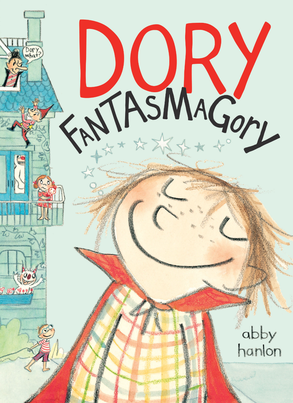 Who is the main character? Why do we care about them?* Dory, aka Rascal. She’s the baby. She’s always annoying her family, and spends most of her time living and playing inside her own head. *If that’s not the most true-to-childhood experience ever, I don’t know what is. I immediately feel for her and totally relate! What is their problem/goal? Her older siblings, Luke and Violet, try to scare her, and it backfires on them. *This ignites Dory’s imagination and it’s so funny and joyful. We must keep reading to see how it continues! SKUNK AND BADGER by Amy Timberlake, with pictures by Jon Klassen 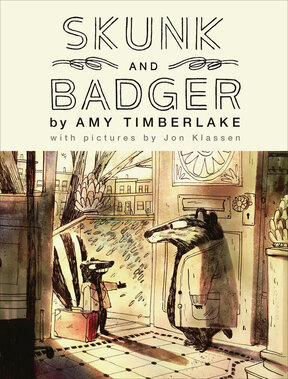 Who is the main character? Why do we care about them? Badger! He loves rocks and privacy and not being bothered. He takes his work very seriously. Skunk! He’s carefree and impulsive. And he’s Badger’s new roommate. *Oh, how can we not relate to these two, and also feel the tension of these opposite in temperament characters now being stuck together as roommates?! Whether you’re more Badger or more Skunk, we feel for each of the characters, and also connect with them! What is their problem/goal? How is Badger going to live with Skunk? How is Skunk moving in going to disrupt Badger’s way of life? *And, as I needed to know…is Badger going to be nice to him?! THE STORY OF GUMLUCK THE WIZARD by Adam Rex 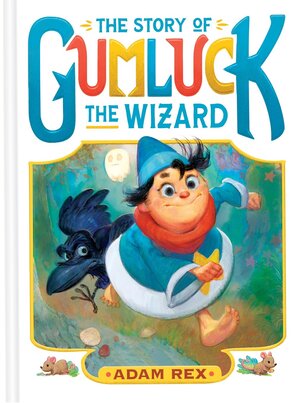 Who is the main character? Why do we care about them? Gumluck! He is a little wizard with the biggest heart! He cares deeply about others, and especially about pleasing others. He’s hardworking, and well meaning, but not great at reading others, or the seeing things from their perspective. *I immediately wanted to hug him! I felt his big heart right away, and that reeled me in. And then his lack of awareness of what’s actually going on – I felt for him, and was invested in his growth and his journey! We also meet another character in chapter one who makes us laugh (you’ll have to check out the book to find out!), and we feel connected to because *they get it! Are they a little bitter? A little curmudgeonly? You bet…that makes them all the more relatable. And, what a great way to build tension from the start when these two characters meet each other in this first chapter. What is their problem/goal? It is revealed that Gumluck’s secret is that he wants “to be crowned Harvest Hero at the Harvest Dance”. *But this seems unlikely given that no one in his town seems to actually like him or appreciate him (not even his new “friend”). I needed to read on because I was so invested in him achieving his dream, and also so aware of how far of a goal that was from where he stood. How was it going to happen?! 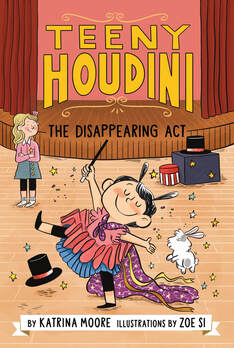 Who is the main character? Why do we care about them? Bessie Lee – she’s not “Teeny Houdini” yet, but she is the teeniest in her first grade class, the teeniest in her family, full of zippy energy, and eager to make a BIG impression! *We’ve all felt tiny at one point or another—whether physically, or simply not important enough, or visible enough to be noticed. Her energy is fun, and we want to see how that is contained, or NOT in the pages to come! What is their problem/goal? She’s determined to win the school talent show so that she can finally feel big! * I’ve heard from so many readers who connect to Bessie’s feeling, and it’s not at all to do with their small stature. So we feel for her, and we want her to succeed! Now that I’ve given you some examples, I’m putting you to work! Go grab any two character driven picture books, chapter books, or novels. If you have them handy, or can easily check them out form the library (they are very popular and have many books in the series!), I’d suggest trying this out on MAGIC TREEHOUSE #1 DINOUSAURS BEFORE DARK by Mary Pope Osborne, or THE NEVER GIRLS: in a blink by Kiki Thorpe. Only read the first chapter (or first two spreads if it’s a picture book). What are the answers to the questions: Who is the main character? Why do we care about them? What is their problem/goal? Finally, it’s your turn! Go back to your Work-In-Progress. Only read the first chapter (or first intended spreads of your picture book). Who is the main character? Why do we care about them? What is their problem/goal? Does your beginning reveal this important information? Does it beg us to read on? If not, you can also restart. The magic, I believe, is always in revision. Bring us a beginning that we never want to end. Happy Writing! -Katrina ✨  Katrina Moore writes in Georgia. She holds a M.A. in Teaching and taught elementary school for thirteen years in Maryland, Massachusetts, New York, and New Jersey. Her mission is to create books that children will hug for ages. She is the author of the picture books, HOPE IS A HOP, illustrated by Melissa Iwai (Penguin/Dial, March 2023), SOMETIMES LOVE, illustrated by Joy Hwang Ruiz (Penguin/Dial, Summer 2022), ONE HUG, illustrated by Julia Woolf (HarperCollins/Tegen Books, Dec. 2019), GRANDPA GRUMPS, illustrated by Xindi Yan, and its companion, GRUMPY NEW YEAR (Little Bee Books, Dec, 2022), and the forthcoming CHANG;E ON THE MOON (HarperCollins, September '24), and THE STAR IN YOU (Macmillan/Roaring Brook, October '24). Her humorous TEENY HOUDINI chapter book series, illustrated by Zoe Si, star the magical, mischievous, mayhem-maker Bessie Lee. TEENY HOUDINI: THE DISAPPEARING ACT, TEENY HOUDINI: THE SUPER SECRET VALENTINE, and TEENY HOUDINI: THE GIANT PANDA PLAN are all available now (HarperCollins/Tegen Books). When she is not writing, she is cooking without a recipe, painting outside the lines, adventuring, or snuggling up with her two kids, husband, pups, and of course, a cozy book. Connect with her on twitter @kmoorebooks or at www.katrinamoorebooks.com. Katrina enjoys traveling near and far to visit schools and students, as well as teachers, librarians, and aspiring writers. For inquiries about speaking, presentations, workshops, panel participation, or school visits, please see the author visit page and contact her to schedule a visit!
1 Comment
Hello, hello! It's been a HOT minute. Seriously. HOT. I hope you've been able to stay cool. I've been escaping to the beach and pool whenever I can. I've also made it part of my summer morning routine to sit right by the air conditioning vent with a ginormous pile of picture books (and my daughter, and my son, and my two huge dogs) all on my lap. Okay, so it doesn't stay cool for long. But it's snug in the best way. It's no secret that in order to write well, you have to read a lot of books in the genre that you write in. It's also common (and very good) advice that if you are trying to submit new work for publication, then you should be reading new books, so that you are up to date on what the market looks like right now.* So for this post, I'm focusing my examples on books that have published within the last two years (including my newest picture book, SOMETIMES LOVE, which just published this month!) In addition to reading a lot this summer, I've critiqued a lot of picture book manuscripts (which, by the way, is another highly recommended, and stellar way to get better at writing your own manuscripts!). During these critiques, I found myself asking the same questions over and over again. In this post, I'll share some of these questions, and show you some recent picture books that answer these questions exceptionally well, to help you dig deeper into revising your own picture book manuscript. *More on marketability of picture books on this previous blog post. Is this the best title for this story?
How can you create a clearer cause-effect relationship between what the character wants, and what happens as a result of their attempts to reach that goal? 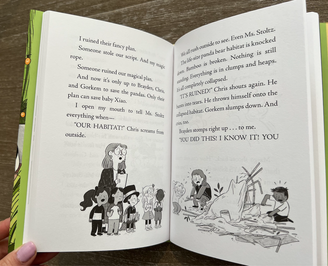 I'm going to use my TEENY HOUDINI chapter books as an example here, again. Because this question was the one I struggled with the most while plotting out each of the books. In order to move your story along in a clear, linear, way, this question needs to be considered. In TEENY HOUDINI: THE GIANT PANDA PLAN, Bessie meets a baby panda and realizes that pandas are in danger. So she crafts a plan to help save them, and rallies her first grade class to do the same. But, as a result, she competes with her classmates to come up with the best plan, and mayhem ensues. At the lowest point, she's the farthest from her goal of saving the pandas, and it's all a result of the trouble she (and her classmates) caused along the way. Your Turn: Can you clearly connect the events in your story? A causes B causes C? Does every scene have the same energy/intrigue and passion as the opening scene? Where do you purposefully change this? For what effect? 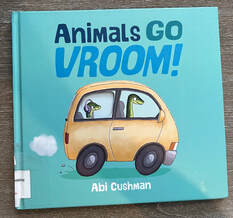 In Abi Cushman's ANIMALS GO VROOM! we immediately are hooked and want to take part in this guessing game. But we're going to be surprised when we turn the page! This pattern continues (all while building and showing a narrative through the art) throughout the entire book. It's the perfect suspenseful set up, and it carries us through the whole way. Your Turn: Are you changing the energy level as you move from one scene to the next? For what effect? Is there something another character could do, or an opportunity that presents, that would really endear to the main character's strengths to show us their growth and/or consistency?  In LALA's WORDS by Gracey Zhang, Lala is, in my opinion, perfect. She doesn't need to change (but the grown up around her does!), so she doesn't. Instead, we get a really satisfying moment(s) in the story where there is change. And, it reinforces Lala's behavior, her strengths, and the fact that she is perfect just as she is. You'll have to get the book to see for yourself. (This one also has one of the best under the jacket cover reveals. I love it so much!) Your Turn: Is there such a moment in your story? Or does your character do the changing? (Why?) Note: one answer is not better than the other. But one answer might suit the story you are trying to tell better. Is there a refrain that might serve this story well? 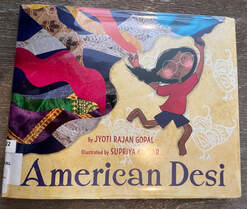 c: Jyoti Rajan Gopal and Supriya Kelkar, AMERICAN DESI, Little Brown Young Readers, 2022 c: Jyoti Rajan Gopal and Supriya Kelkar, AMERICAN DESI, Little Brown Young Readers, 2022 In Jyoti Rajan Gopal's AMERICAN DESI, illustrated by Supriya Kelkar, the main character asks a question, "Which is the color of me?" Throughout the story, she explores this question beautifully. Not all stories need a refrain. But, when a story has one that works so well to carry the movement forward, and remind us of the character's struggle/goal, it's so lovely. Look at how beautiful this book is, too! Your Turn: Would your story be enhanced with a refrain? Where are the places where you make us have to flip feverishly to find out what happens next? In Matthew Forsythe's MINA, he does this immediately! The opening spread introduces us to Mina's lovable character, then leaves us hanging. "Mina lived in her own little world where nothing every bothered her. Except for one thing." We need to know, so we turn the page. And then...and then... he makes us wait five more page turns before he lets us know "the one thing." During those five page turns, we are introduced to dad, made to laugh, and the tension from that initial suspense builds and builds until we reach a very satisfying, and yet more suspenseful answer. This book--every part of it, is masterful. Your Turn: How are you keeping us on our toes? Where are you leaving us in suspense? What could go wrong for this character? What's the worst thing that could happen? 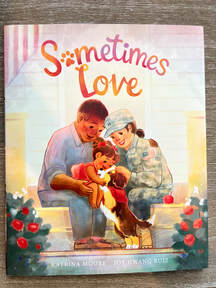 Such a cruel thing to do! Torture your main character? Why would we do that?! Well, because we want our books to reflect the lives of our readers. And sad/bad/terrible things happen to all of us. How can we show them that they are not alone? How can we bring them on a journey with our character? How can we bring the story to a close with a truly satisfying ending? In SOMETIMES LOVE, by me and Joy Hwang Ruiz, our main character has to say goodbye to her dog. It's devastating. But this terribly sad, lingered upon moment, does lead to a very happy ending (and, in fact, it's the ending I wish I could have given myself in real life! That's the power of our stories. We *do* get to write the ending). Your turn: Are you raising the stakes for your character? Are you making it terrible enough for them? Are you delivering a satisfying and surprising ending? Where can you switch it up on purpose? Can you give us a response we don't expect, and also break from an established pattern in a way that is really humorous? Scott Rothman does this expertly in ATTACK OF THE UNDERWEAR DRAGON, illustrated by Pete Oswald. He gives us three logical examples, followed by one that is unexpected, silly, and funny! "Cole had a lot ot learn. He learned how to sharpen Sir Percival's swords...spears...battle-axes...and knight pencils." It also makes us wonder, what does Sir Percival need all those knight pencils for? What are knight pencils? It's intriguing, but not distracting. Your turn: Where are you switching things up in your manuscript? Is there a way you can make this more surprising? 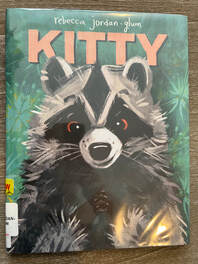 Are you starting to sense a theme here? Surprises in the story hold our attention or re-engage us. Take a look at Rebecca Jordan-Glum's spread in KITTY to see how she does this. The text reads "so she grabbed the cat food and coaxed it back inside." This should give us relief. Whew. All is as it should be. Except that it's not! We see in the art that kitty has actually dashed outside, and a raccoon has come inside. Only Granny doesn't have her glasses on, so she can't tell that the wrong critter is in the house. Oh goodness. When I read this page to my six year old, his eyes grew huge. He covered his mouth to stifle a laugh, because he knew something that the main character did not. It was surprising, and so, so funny! And the start of major mayhem! Your turn: Where can you surprise us in your manuscript? What take away do you hope to leave the reader with? 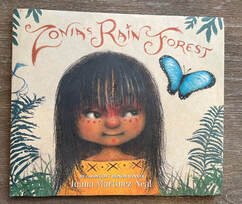 Not all picture books need a message to impart! In fact, I would say that some of my favorite picture books do not have a strong, overt message. Rather, they leave me with a feeling, a wonder, a connection, a feeling of satisfaction. (I dive more deeply into satisfying endings here). So, then, if you're not hitting the reader over the head with a message, then what are you leaving them with? In Juana Martinez-Neal 's glorious book, ZONIA'S RAIN FOREST, we are introduced to Zonia, who we immediately love, her family, and her home, the rain forest. The rain forest calls to Zonia and we follow her as she ventures through it. By the end, we love her rain forest as much as she does. And so the last line of this manuscript is one that we feel. It's a call to action. It's powerful. Your turn: What's your last line? Is it delivering to your reader what you hope that it will? Overall, these questions have to do with intent and purpose. Why are you making this choice? What can you do on purpose to create the effect you want? What is it that you're really trying to do here? (By the way, these are also the same questions I end up asking myself while revising my picture book manuscripts). I hope this list of questions, as well as my Picture Book Revision Checklist, is helpful to you as you revise. **If you want the complete list of DIGGING DEEPER INTO PICTURE BOOK REVISION QUESTION, then make sure you're signed up for my (free) Writing Blog! I've sent/am sending the list to all Blog subscribers.** Do you have other questions you ask your manuscript/yourself often? What tried and true ways do you use to you improve your story when you know it needs something but feel stuck? Share in the comments below! Happy Writing! -Katrina ✨ P.S. *For those inquiring about manuscript critiques and editorial services, I offer a very limited amount, due to a full schedule. If interested, please use the form on my contact me page to reach out about availability and more.*  Katrina Moore writes in New Jersey. She holds a M.A. in Teaching and has been an elementary teacher for thirteen years. Her mission is to create books that children will hug for ages. She is the author of the picture books, SOMETIMES LOVE, a powerful and poetic exploration of love---from giving, to growing, to sometimes letting go, illustrated by Joy Hwang Ruiz (Penguin/Dial, Summer 2022), ONE HUG, illustrated by Julia Woolf (HarperCollins/Tegen Books, Dec. 2019), GRANDPA GRUMPS, illustrated by Xindi Yan, its forthcoming sequel, GRUMPY NEW YEAR (Little Bee Books, Dec. 13, 2022), the forthcoming HOPE IS A HOP illustrated by Melissa Iwai (Penguin/Dial, March, 2023), and more to come. Her humorous chapter books series, TEENY HOUDINI, illustrated by Zoe Si, star the magical, mischievous, mayhem-maker Bessie Lee. Books 1, 2, and 3 are all available now (HarperCollins/Tegen Books). When she is not writing or teaching, she is cooking without a recipe, painting outside the lines, or snuggling up with her two kids, husband, pups, and of course, a cozy book. Connect with her on twitter @kmoorebooks or at www.katrinamoorebooks.com. Hello, writers! Happy 2021! I’m writing this blog post from the same house I’ve quarantined in for the majority of 2020, in the same home-office, in the same chair . . . yet something feels different. Despite it being below freezing, I’ve got the windows cracked open. The air drifting in is cold. But it’s also crisp, cathartic, and new. It’s full of possibilities. That’s what a new year promises . . . possibility. A blank page to be filled with anything. Personally, I’m hoping to flesh out a new middle grade idea that I’ve collected bits and pieces for in 2020. Through the darkest days of the year (and there were many, unfortunately), I found myself needing to write. I had so much to let out, and my notebook was the safest place to release these raw and honest feelings. In these dark moments, I wrote and wrote and wrote. Not much made sense. Not much tied together. But I wrote and wrote my way back to joy, however fleeting it was. And I captured the joy of each day. I wrote down those moments, too, to remind myself to focus on the light. To let the light guide me. And it did. One of these cathartic writings morphed into a picture book manuscript that will be published by Dial/Penguin in 2023 (stay tuned for more soon!). So when I look back to 2020, despite the many tragedies of the year, and in some ways, because of some of them, there was much joy, some magic, and so much love. That’s what I’m hoping to capture in this next middle grade project, now that I’m in the proper headspace to start writing it . . . joy, and magic, and love. As I begin to draft this new novel, I’ve pulled out a checklist that I made for myself, something I’ve named CHAPTER 1 & 2 CHECK. It’s a checklist I’ve made after studying many of my favorite middle grade novels, including THE TIGER RISING by Kate DiCamillo and HELLO, UNIVERSE by Erin Entrada Kelly. When I “study” a novel, I re-read the book as a writer…looking for those literary devices that make the writing wonderful. To do this, I’ll type out the first chapter or two of the book (or the scene I’m studying). Then, I’ll make notes on my typed version of the text (because I can’t bear to mark up the beautiful book!). Finally, I’ll re-read the notes I marked, write out the revelations I made, and turn it into a checklist question to use when I revise my own writing. 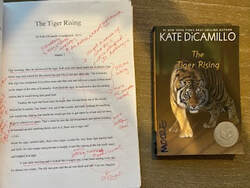 A revelation I had after studying the first paragraph in THE TIGER RISING by Kate DiCamillo was that “we get a sense of who the main character is, we’re intrigued, and it’s hooking us!” all within the first few sentences. 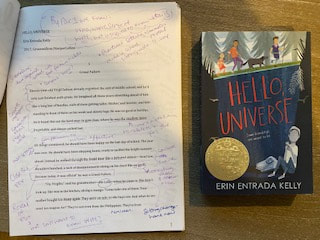 And a note I wrote down after studying chapter one of HELLO, UNIVERSE by Erin Entrada Kelly was that “by paragraph one, we know who, where, a sense of why, and we’re intrigued to know the details.” If you haven’t studied books in the genre you’re writing, I’d highly recommend it. I do this frequently and with a wide range of books within the genres I write in-- picture books, chapter books, and middle grade. It’s the best way I’ve learned what works. And reading and studying widely, and taking notes on my notes, allows me enough space from the mentor text to then apply what I need specifically for my own writing. So, without further ado, here’s my CHAPTER 1 & 2 Checklist. I hope it’s helpful to you! (If you're looking for my picture book revision checklist, it's here!) Of course, nothing will be more powerful than studying mentor books yourself, and making your own checklist. But here’s mine to supplement yours: CHAPTER 1 & 2 CHECKLIST: By Katrina Moore
I have an “Every Chapter Checklist” that I’ve compiled as well. I’ll share that in a later post (make sure you’re subscribed to the blog so you don’t miss it!). As we begin this new year, I wish you endless possibility and a notebook full of magic. A blank page to be filled with anything. What will you fill yours with? Happy Writing & Revising! Katrina ✨  Katrina Moore writes in New Jersey. She holds a M.A. in Teaching and has been an elementary teacher for eleven years. Her mission is to create books that children will hug for ages. She is the author of the picture books, ONE HUG, illustrated by Julia Woolf (HarperCollins/Tegen Books, Dec. 2019), GRANDPA GRUMPS, illustrated by Xindi Yan (Little Bee Books, April 2020), and the forthcoming SOMETIMES LOVE, a powerful and poetic exploration of love---from giving, to growing, to sometimes letting go, illustrated by Joy Hwang Ruiz (Penguin/Dial, Summer 2022). Her humorous chapter books series, TEENY HOUDINI, illustrated by Zoe Si, star the magical, mischievous, mayhem-maker Bessie Lee. Books 1 and 2 will publish Winter 2022 (HarperCollins/Tegen Books). When she is not writing or teaching, she is cooking without a recipe, painting outside the lines, or snuggling up with her two kids, husband, pups, and of course, a cozy book. Connect with her on twitter @kmoorebooks or at www.katrinamoorebooks.com. 
One of the most common struggles for writers, myself included, is creating an ending that delivers a WOW factor. A good ending leaves a feeling of resolve.
But delivering a wow ending . . . what’s the secret? Picture book author Dev Petty said it best when she tweeted this:
(She also says lots of other wise things and gives great writing tips if you follow her on twitter, FYI.) I couldn’t agree more. The best endings leave me thinking about a book looong after I’ve closed the covers. In a previous post, CRAFTING STAND OUT PICTURE BOOKS: A REVISION CHECKLIST, I challenge picture book creators to ask themselves: DOES THE STORY FEEL RESOLVED? -Was it logical but surprising? -Are we satisfied? In this blog, I’ll expand on these questions by studying picture books that deliver a W.O.W. ending. I have a method for studying picture books from the lens of a creator, but for this blog, I'm going to zoom in on the endings. How do they make us wonder? How do they outdo our expectations? How do they wrap us in all the feels? Of course, I'm never one to ruin a good surprise. So I won't actually be sharing the endings. No spoiler alerts here! But I will share a glimpse leading up to the ending and follow up with my reaction as a reader. 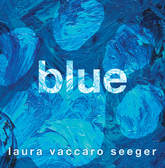
Wonder:
How do you end a book by creating a beginning? How can you ingnite, within the reader, a curiosity to explore more? A sense of wonder? If you haven't experienced BLUE, from Laura Vaccaro Seeger, you need to! I use the word experience purposefully because this book is a true work of art. As with all her books, the illustrations are stunning. You want to touch each page, each cut out, and you pore over each artistic detail time and time again. I rarely read one of her books with my mouth shut because I am full of wonder the entire time. How did she do this? How will she create a spread as magical as the last one? What will be on the next page? This book is a companion to the award winning GREEN, and it is wonderful! Especially the ending. You are invited into this special relationship between a boy and his dog as they grow up together. In the end, your heart will break. But it will also heal. And you are left with an overwhelming feeling of hope. And wonder. What will be his next chapter?
Outdoing Our (the reader's) Expectations:
You've crafted the perfect resolution. It's sweet. It's silly. It's meant to be.
It's . . . totally expected. Ugh. How can you surprise the reader? How can you deliver a twist that's logical, yet totally unexpected? How can you outdo yourself?
I previously tweeted this list of picture books that surprised me in the best ways. They made me giggle. Or gasp. Or guffaw!

Another book that outdid my expectations at the end was Dan Santat's AFTER THE FALL. This book tells the story of what happens after Humpty Dumpty falls off the wall and how he finds the courage to climb back up again. The story resolves beautifully, and then the very end is so unexpected, yet logical, that it's mind-blowing. Of course this is how it should end! How has no one thought of this before? How can *I* do something like this?! Wrap Us In All The Feels
It is a very special thing when you connect to a book. When this connection happens, that's what brings me back to a book time and time, again. I've not only read the book, I felt it. I related to the struggle. I cheered for the main character. I was part of the journey. And when that journey comes to a resolution that's heartwarming, deserving, and wraps me in strong feelings---that's a wow ending. When this happens, I literally will hug the book, knowing it's just made it's place onto my bookshelf and into my heart.
This book ends with the happily ever after that, we, as very invested readers, *needed* to happen, but then the very last spread wraps us in a feeling that's warm. And wonderful. And WOW. Smile-lingering, heartwarming, wow.
Now, it's your turn!
Check out the ending of your work in progress. Does it check the list? Will make us wonder? Will it outdo our expectations? Will it wrap us in all the feels? Your W.O.W. ending is waiting for you, wishing, willing you to write it.
Will you? ✨
Happy Writing! -Katrina 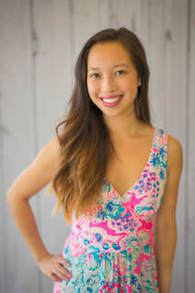
Katrina Moore writes and teaches in New Jersey. Earning her M.A. in elementary education, she has been a teacher for almost a decade in Maryland, Massachusetts, and New York. Her mission is to create books that children will hug for ages. Her debut picture book, ONE HUG, illustrated by the talented Julia Woolf, is a lyrical celebration of the different ways that hugs bring people together, forthcoming from HarperCollins/Katherine Tegen Books in 2019. The book follows an Asian-American boy as he and his family prepare to welcome their immigrant relatives. Her second picture book,GRANDPA GRUMPS, illustrated by the amazing Xindi Yan, is a humorous and heartfelt story featuring a little girl, Daisy, and how she connects with her Chinese grandfather across cultures and generations, forthcoming from Little Bee Books in 2020. When she is not teaching elementary kids or writing, she is cooking without a recipe, painting outside the lines, or snuggling up with her two kids, husband, pomapoo pup, and of course, a cozy book. Connect with her on twitter @kmoorebooks or at www.katrinamoorebooks.com.
By Katrina Moore Before I’m ready to send a manuscript to my agent, and even to critique partners, I go through rounds of self-revision. Over time, I’ve found myself asking the same questions over and over again (and asking the same questions to my critique partners when giving them feedback on their work), so I’ve compiled the questions into a revision checklist for myself. And now... I’m sharing it with you! Because I keep learning. And growing. And nothing helps me to learn more or grow faster than sharing what I’ve learned along the way. In this post, you’ll find essential questions to ask yourself as you revise your manuscript to make it the best that it can be. I’ve also included an example for each checkpoint using recently released (within the past 3 years), stellar picture books. Without further ado...here's the checklist: PICTURE BOOK REVISION CHECKLIST: 1) WHAT’S YOUR BOOK REALLY ABOUT? Write out the pitch. -What’s at the heart of this story? -What do I want this story to do? (Use this as a guide for revision)
 2) IS YOUR CHARACTER FULLY DEVELOPED? -Is this someone a kid can relate to? -Is there depth? -Why are we rooting for the main character? Interview your character and ask all sorts of questions. This is to inform YOU even though most of it won’t make it into the text. The better you know your character the better you’ll write your character, the more your character will feel real and we’ll care about your character. Example: Check out the first spread of JULIÁN IS A MERMAID by Jessica Love. In very few words, we know so much about Julián and we care about him. We’re immediately connected to his relationship with his abuela. Think about how much is not written in this text, but was necessary for the author to know in order to create such a powerful opening and introduction to the characters. 3) IS YOUR STORY TIGHT? Go through the story sentence by sentence, word by word. -Is this word/sentence serving the story? -Is it driving the plot? -Is it adding to character development? If the answer is no—cut! Example: Kelly DiPucchio and Greg Pizzoli’s DRAGON WAS TERRIBLE opens with: 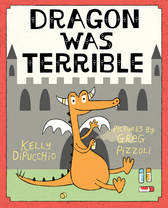 “Dragon was terrible. Naturally, dragons have a bit of terrible in them because they’re dragons after all. But THIS dragon here? Super terrible.” 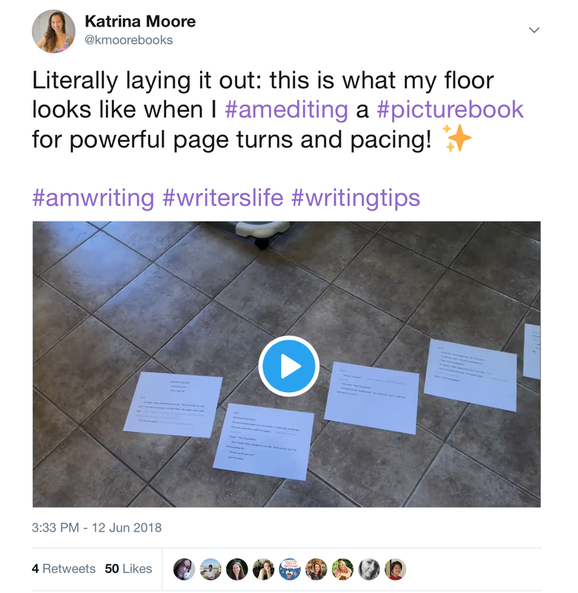 The first sentence here introduces us to the character and sets up the plot. Every word following this first sentence carries weight in establishing the narrative voice of the book, and also drives the plot by creating more tension. It engages what we already “know”—dragons are terrible. But this character is going to be even more terrible than those dragons we already know? Oh boy. As a reader, I’m eager to find out how bad this character is and what shenanigans he causes. How can he be that terrible?! See how she hooks us in with exactly the right words? 4) IS THIS PACED FOR A PICTURE BOOK? Paginate it (12 or 15 spreads). -Where do you envision the page turns? -Does it end at a surprising moment? -Are we holding our breath? -Is there tension and build up? Here’s what it looks like when I lay out a picture book: Example: Check out this spread from Ame Dyckman and Scott Magoon’s MISUNDERSTOOD SHARK: 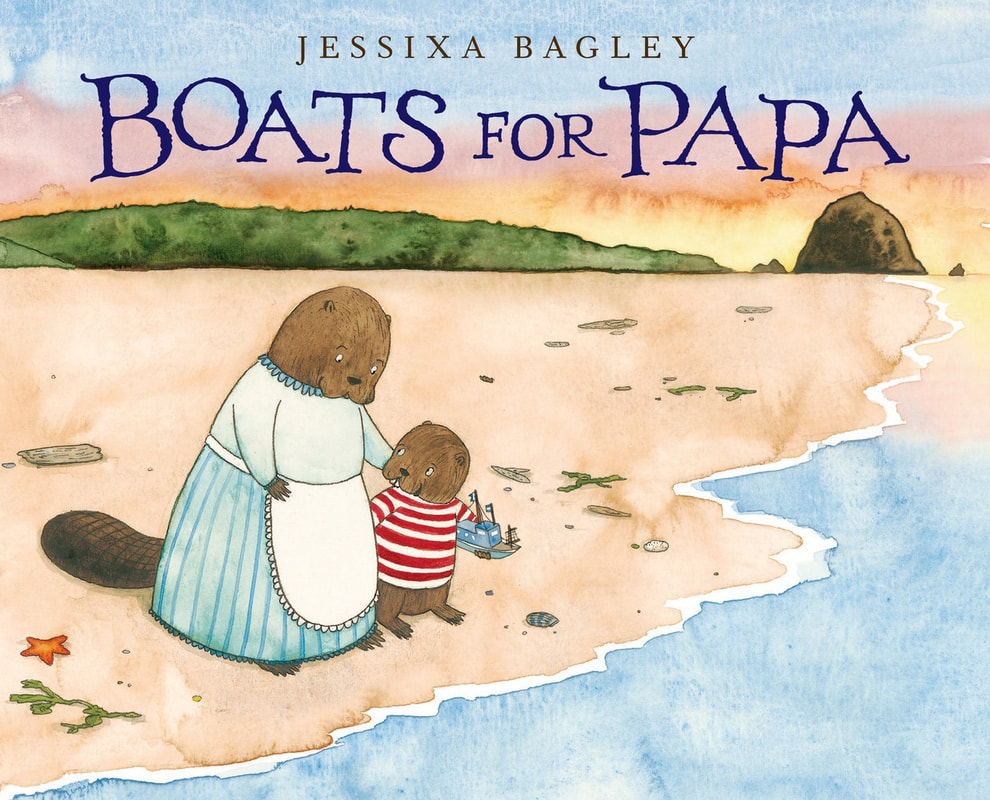 What is Shark’s excuse? I’m curious to find out. I am holding my breath. And I’m wondering, Will I believe him? I have to turn the page to find out. Since there is a literal pause that takes place when a picture book is being read aloud and the page turns, it’s beneficial to maximize the effect of those page turns. 5) DOES THE STORY FEEL RESOLVED? -Was it logical but surprising? -Are we satisfied? Example: In BOATS WITH PAPA by Jessixa Bagley, Buckley carves beautiful boats and sends them out to sea in hopes that they reach his papa, who he misses very much. I won’t give away the ending, because it’s so beautiful and you have to check it out for yourself. It feels inevitable—you know it’s coming, and yet, there's still a twist that's so heartwarming it brings me to tears everytime I read it (which at this point, is close to 100 times, if not more). 6) IS IT MARKETABLE? -What are the recent comparable titles? -How is yours fresh from these? -Why would a kid love this book? -What are the universal truths/emotions/themes that readers will connect with? (these should be in and match the pitch) Example: Check out BACK TO SCHOOL WITH BIGFOOT by Samantha Berger and Martha Brockenbrough, Illustrated by Dave Pressler. 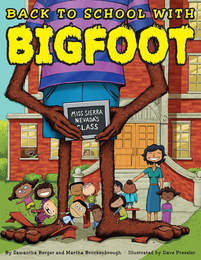 It takes a familiar theme, starting school jitters, and makes it fresh (and funny) by making it about Bigfoot, which is a high interest, intriguing subject for kids (and adults). How does Bigfoot feel about starting school? What would he worry about? There’s tons of kid appeal here! (*More on the marketability of your picture book in this post.) Now it’s your turn! Does your picture book check the list? Happy writing and revising! ✨ -Katrina 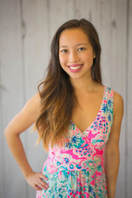 Katrina Moore writes and teaches in New Jersey, outside Philadelphia. Earning her M.A. in elementary education, she has been a teacher for almost a decade in Maryland, Massachusetts, and New York. Her mission is to create books that children will hug for ages. Her debut picture book, ONE HUG, illustrated by the talented Julia Woolf, is a lyrical celebration of the different ways that hugs bring people together, forthcoming from HarperCollins/Katherine Tegen Books in 2019. The book follows an Asian-American boy as he and his family prepare to welcome their immigrant relatives.When she is not teaching elementary kids or writing, she is cooking without a recipe, painting outside the lines, or snuggling up with her two kids, husband, pomapoo pup, and of course, a cozy book. Connect with her on twitter @kmoorebooks or at www.katrinamoorebooks.com. |
AuthorKatrina Moore is an author and former elementary educator. She writes in Georgia. where her mission is to create books that children will hug for ages. She's the author of ONE HUG, GRANDPA GRUMPS, SOMETIMES LOVE, GRUMPY NEW YEAR, HOPE IS A HOP, and the forthcoming CHANG'E ON THE MOON (HarperCollins, 2024), and THE STAR IN YOU. (RBP/Macmillan, 2024), as well as the humorous TEENY HOUDINI chapter book series, starring the magic-loving, mischief-making Bessie Lee, and more. Connect with her on twitter! Freelance EditorKatrina has professionally critiqued over hundreds of picture book manuscripts at writing conferences she has presented at, through her work as a council member, mentor, and presenter for the Rutgers One-on-One-Plus conference, as a Critique Ninja, and through her freelance editing services. Her editorial work and services, attention to detail, and ability to bring manuscripts to the “next level” have been highly praised by editors, agents, published authors, and those receiving critiques. For more details, and to inquire about rates, contact Katrina.
Archives
November 2023
Categories
All
|

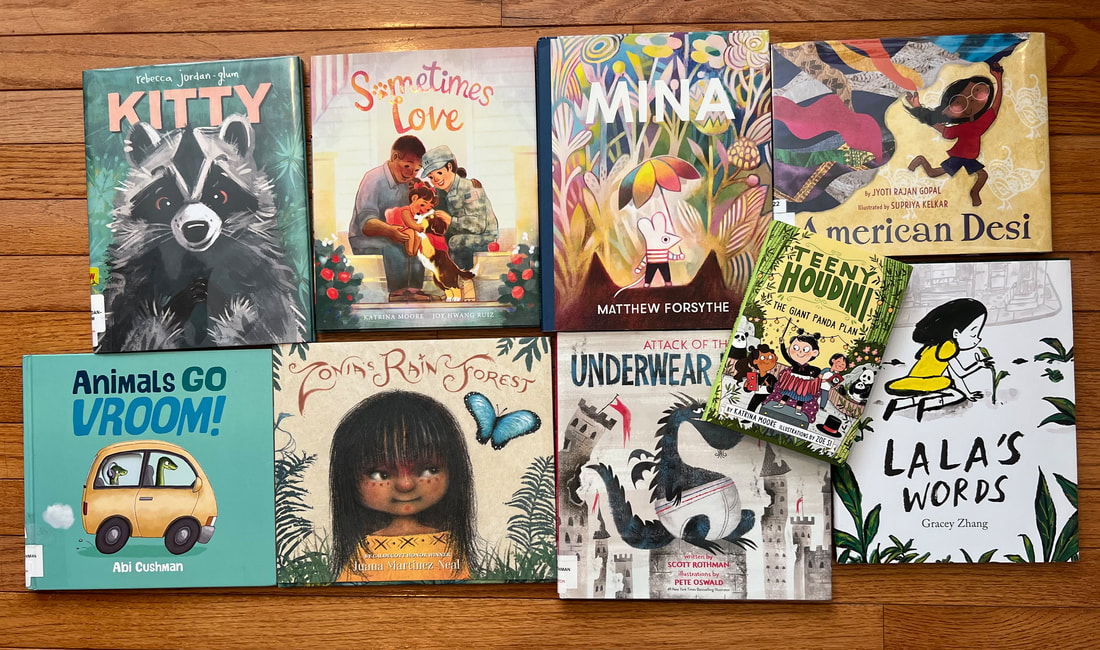
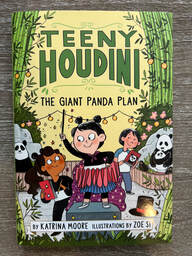
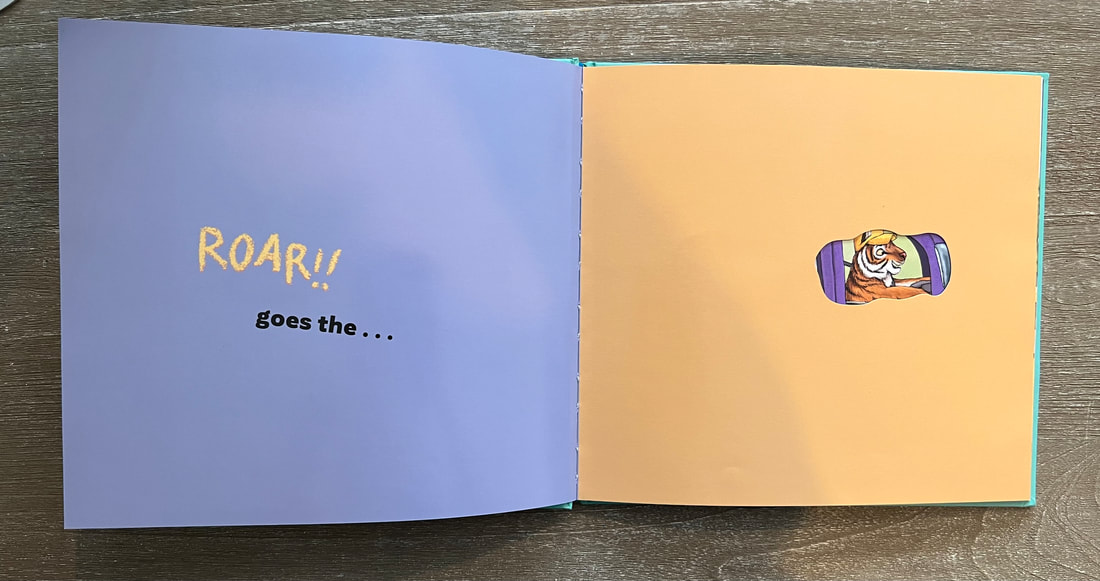
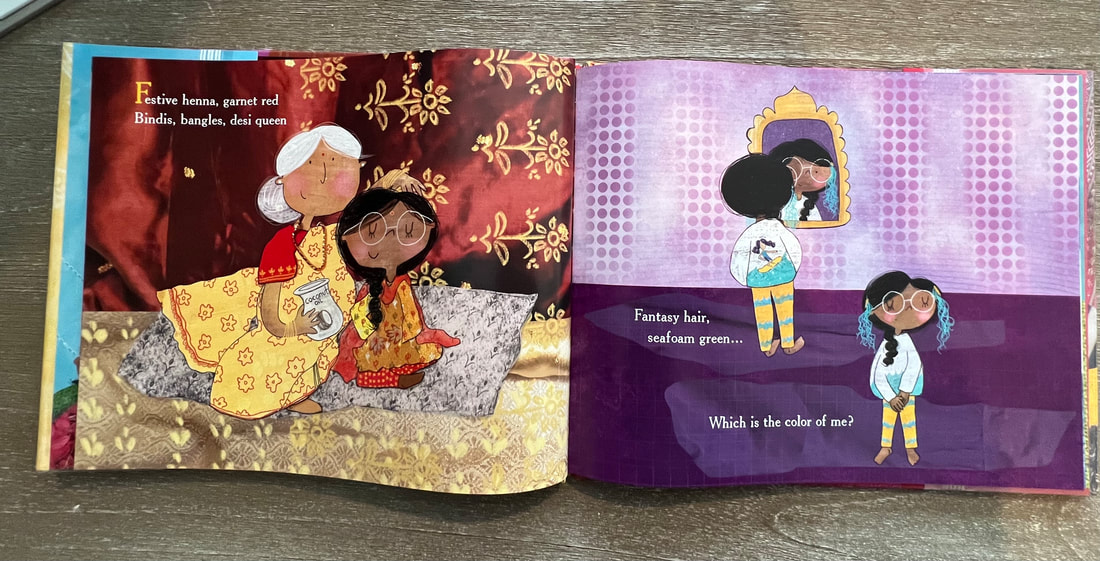
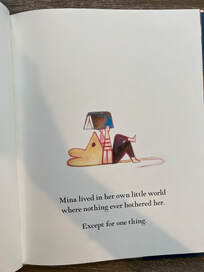
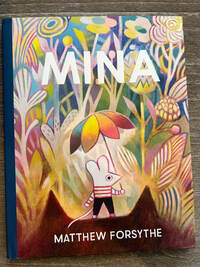
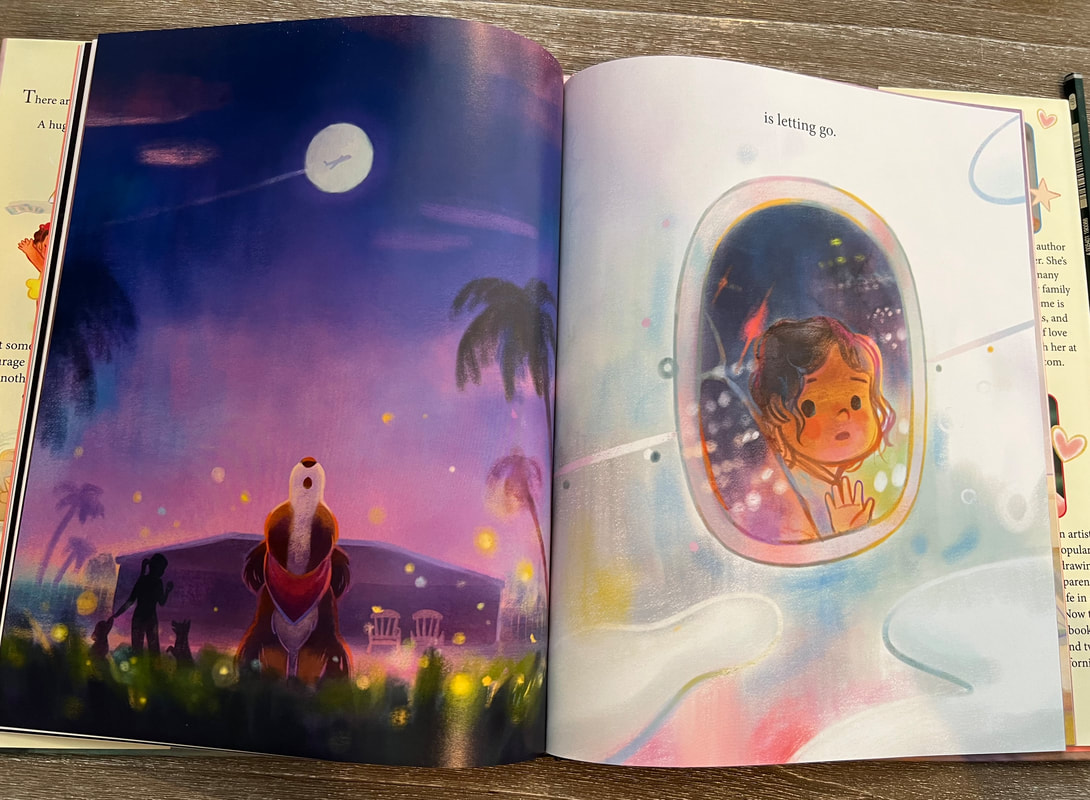


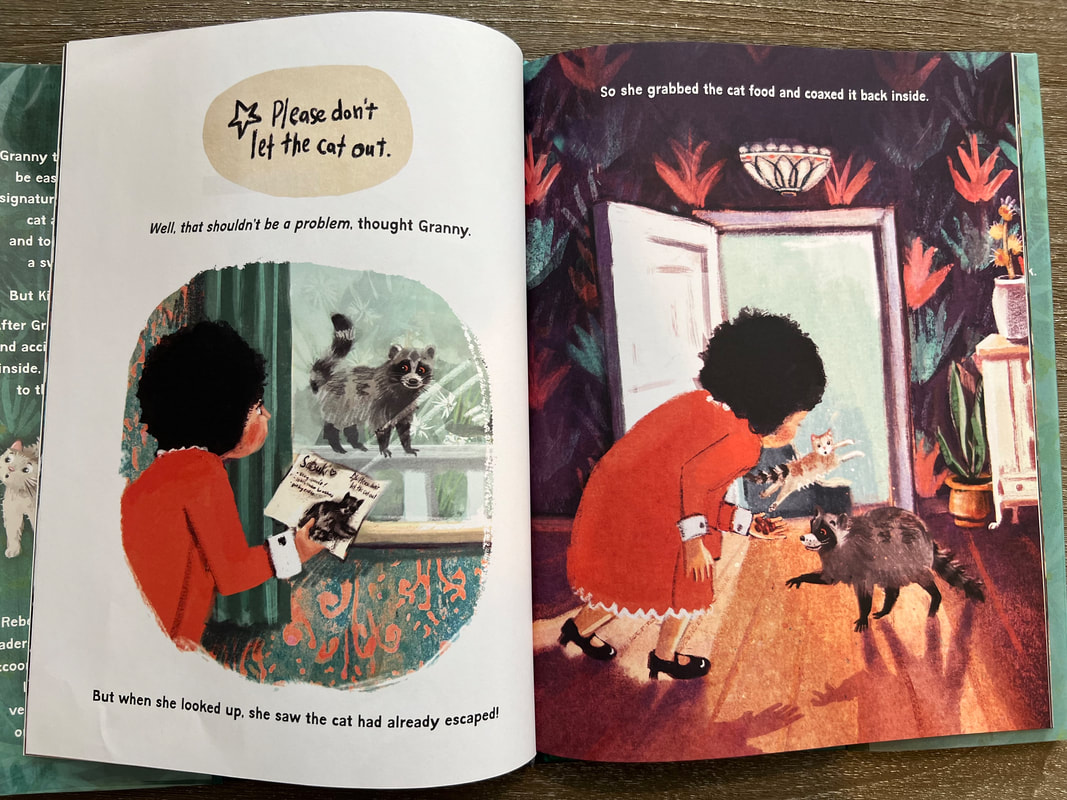
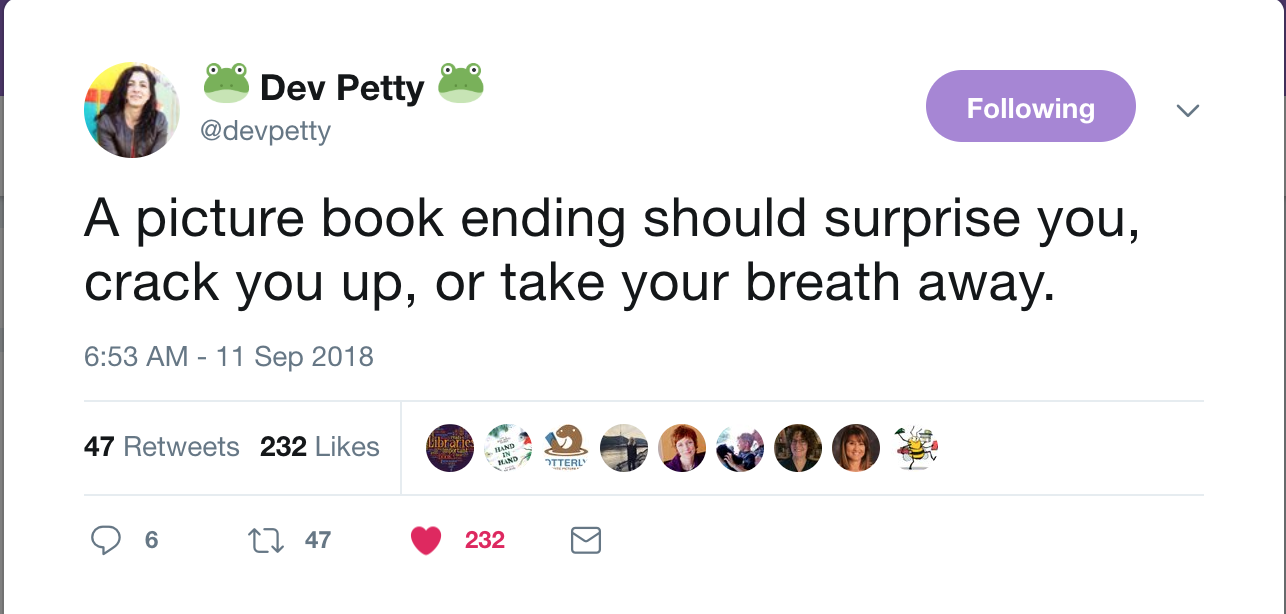
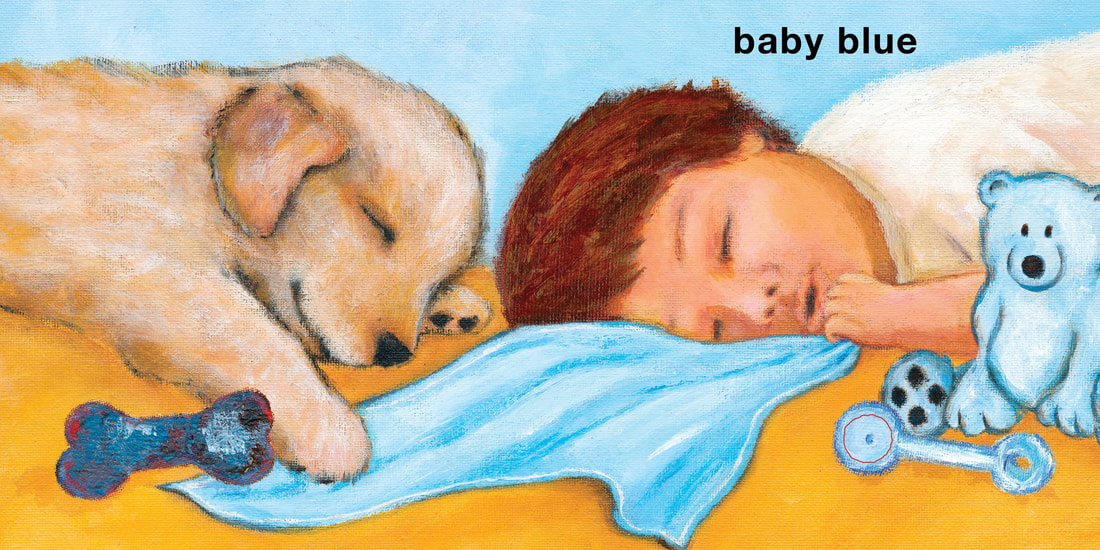
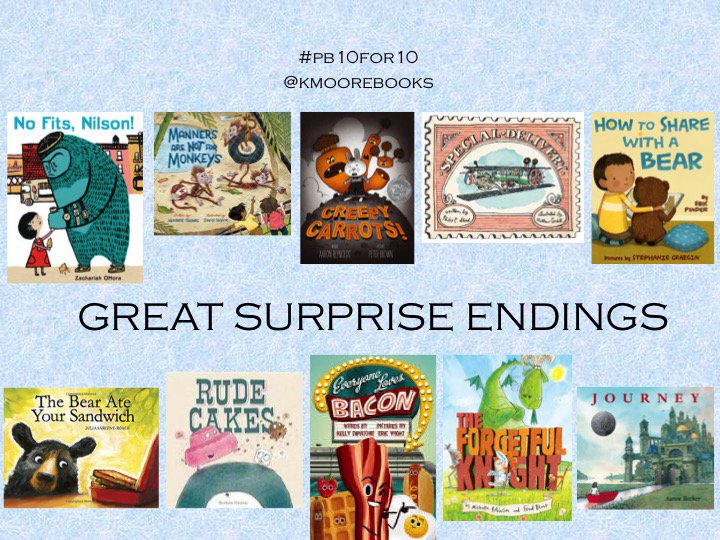
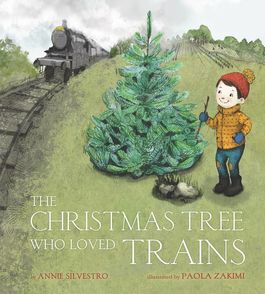
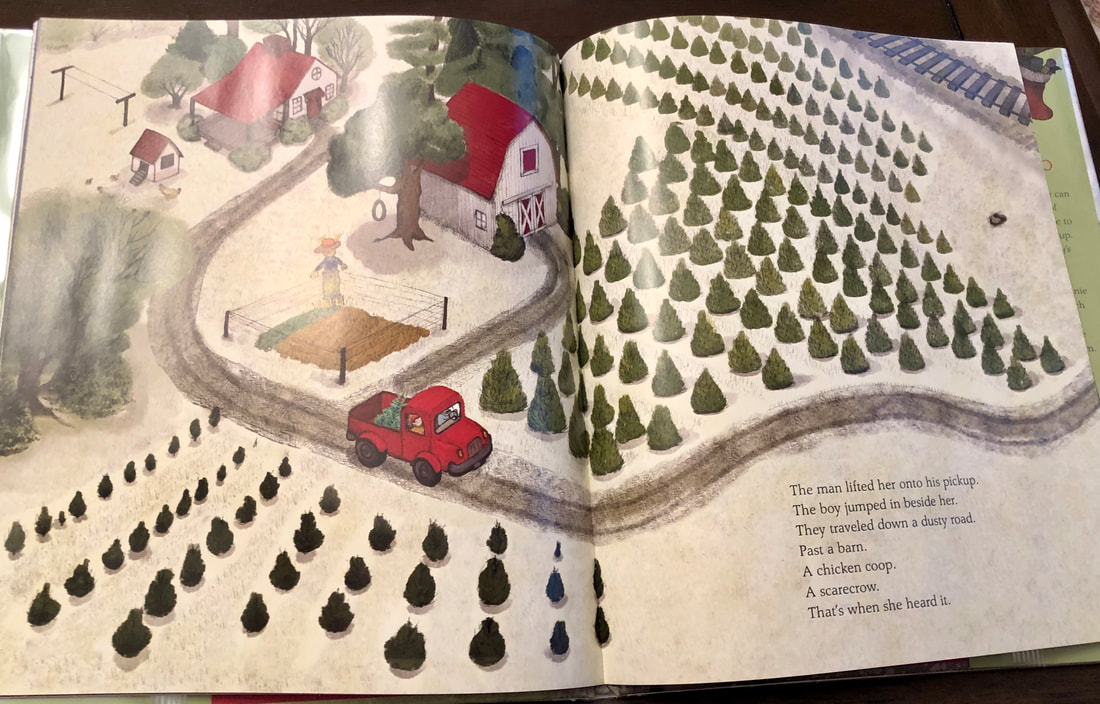

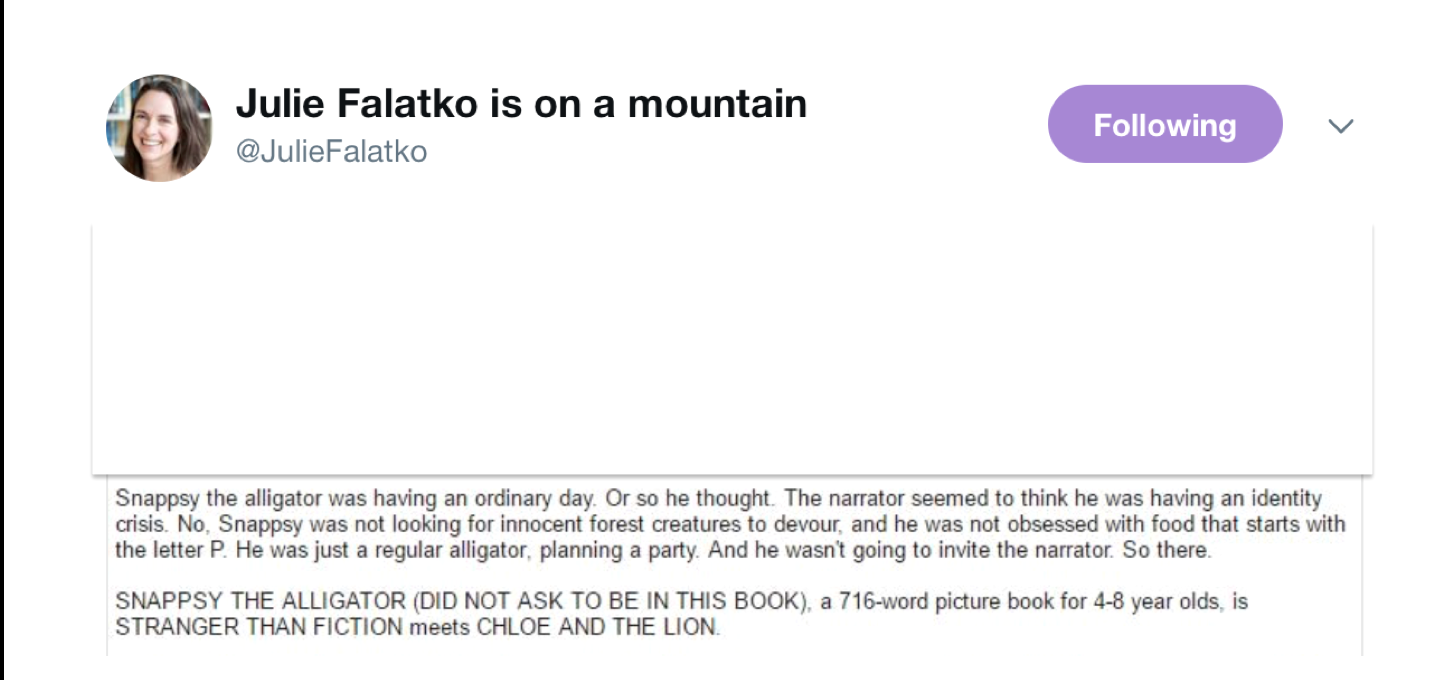


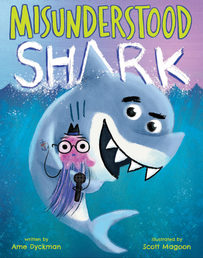
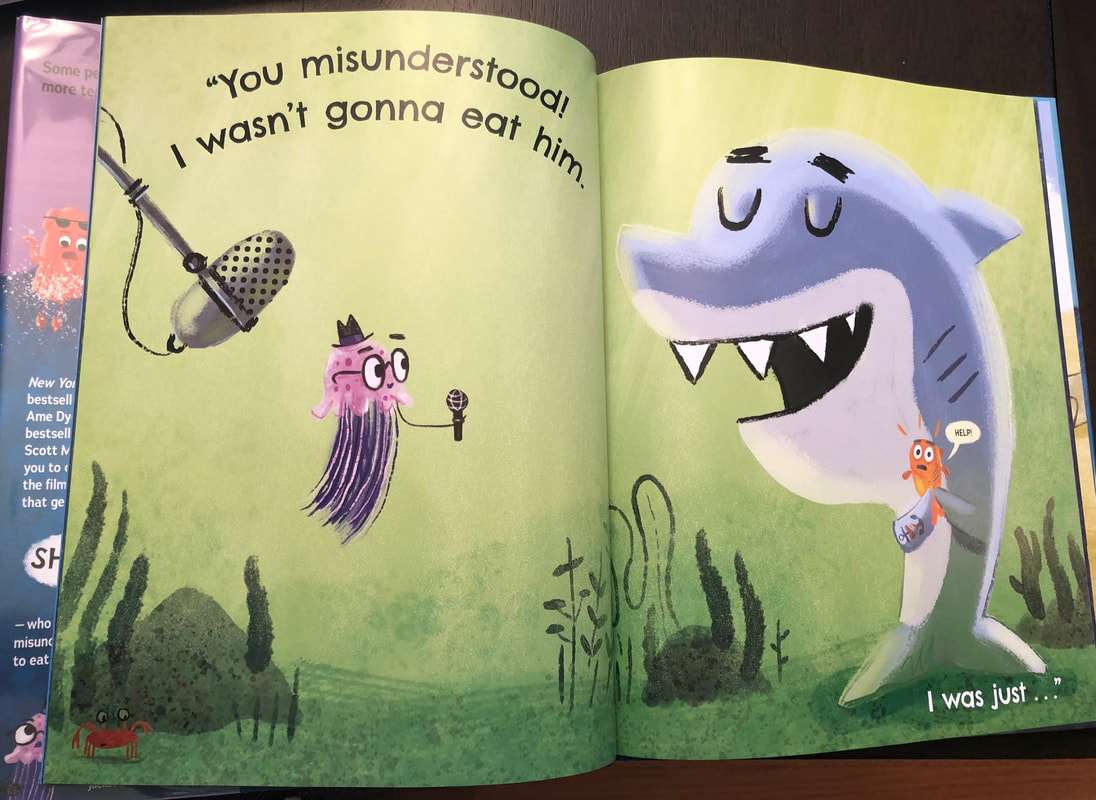
 RSS Feed
RSS Feed